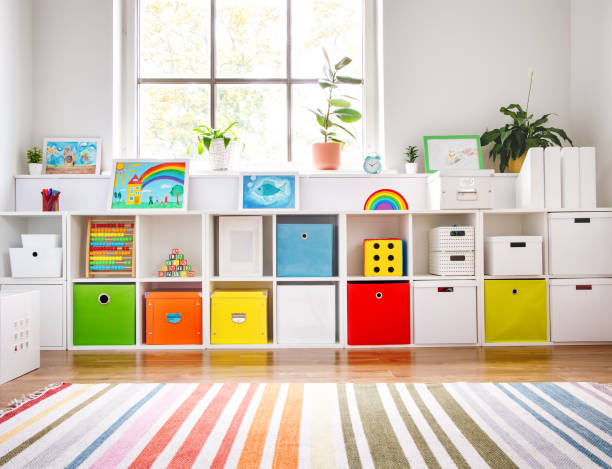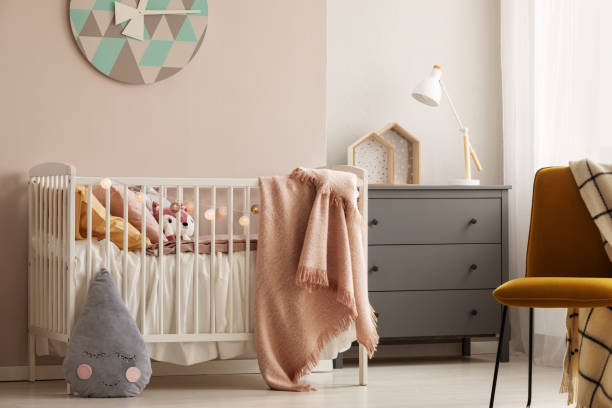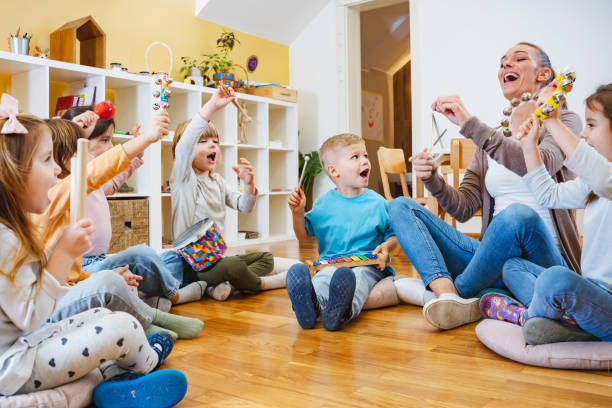Creating a safe and stimulating nursery is crucial for your baby's early development. This guide provides practical tips and considerations to design an environment that promotes sensory stimulation and ensures safety.
Early Childhood Development
Early childhood is a critical period in a baby's development. A well-designed nursery can significantly impact cognitive, social, and emotional growth by providing a secure and engaging space for your baby to explore and learn.
Safety in Nursery
Non-toxic Paints and Baby-proof Furniture
Start with the basics by using non-toxic paints on the walls and selecting furniture with rounded edges to prevent injuries. Secure heavy furniture like dressers and bookshelves to the wall to avoid tipping hazards. Baby-proofing includes installing plug protectors, drawer protectors, window protectors, and radiator covers.

Crib Safety
Choose a crib that meets current safety standards. Ensure the mattress fits snugly with no gaps. Place the crib away from windows, cords, or blinds to prevent accidents. Use a crib bumper to protect your baby’s arms and hands from the bars but avoid adding anything dangerous to the walls around the crib.

Electrical and Toy Safety
Cover all electrical outlets with safety plugs and keep cords out of reach using cord organizers. Regularly inspect toys for broken parts or sharp edges and avoid small objects that can be choking hazards.

Child-safe Storage
Store medicines, ointments, and other hazardous materials out of reach or in locked cabinets. Opt for baby-friendly materials like stuffed animals and avoid glass, ceramic, or other objects that can break and harm the baby.

Room Ventilation and Cleanliness
Ensure the room has adequate ventilation and a window for natural light and vitamin D. Maintain cleanliness by avoiding rugs that catch mites and dirt, which can lead to allergies. A tidy room is easier to clean and essential for the baby’s health.

Stimulating Environment
Contrasting Colors and Textures
Use contrasting and intense colors, along with varied textures, to stimulate your baby's senses. Baby gyms, designed with stability and security in mind, are excellent for developing motor skills and cognitive abilities.

Mirror for Self-discovery
Incorporate small, safe impact-resistant plastic mirrors as part of your baby’s toys. Mirrors help babies become familiar with their bodies and images, making self-discovery a fun adventure.

Nursery Lighting
Lighting is crucial for creating a tranquil atmosphere conducive to sleep. Use dim lights for bedtime and install a wall lamp for nighttime care without disturbing the baby with strong light. Curtains made of materials that do not trap dust help control natural light during daytime sleep.

Music and Sensory Development
Shapes, textures, and music contribute significantly to sensory and motor development. Include musical toys with contrasting colors and soft items like stuffed animals to stimulate your baby’s curiosity and brain development.

Age-appropriate Activities
Introduce a variety of age-appropriate activities that promote cognitive and motor skills, such as puzzles, building blocks, art projects, and storytelling. Reading to your baby fosters language development and a love for books.

Outdoor Play and Social Interaction
Outdoor play is essential for physical development and sensory exploration. Ensure your nursery allows space for crawling and moving around safely. Encourage social interaction through group activities, sharing, and cooperative play.

Creative Expression and Structured Learning
Provide opportunities for creative expression through art, music, and movement activities. Incorporate structured learning activities like early math concepts, basic science exploration, and pre-reading skills into your nursery design.

Positive Reinforcement
Use positive reinforcement and praise to encourage your baby’s learning and exploration. Positive feedback boosts confidence and fosters a love for learning.
Parental Involvement
Communication and Support
Maintain regular communication with caregivers or daycare staff. Discuss your child’s progress and any concerns you may have. Extend your child's learning experiences at home by engaging in educational games and encouraging curiosity.

Feedback and Collaboration
Provide feedback to caregivers or daycare staff about your child’s experiences and learning milestones. Collaborate to ensure a consistent approach to your child’s development.
